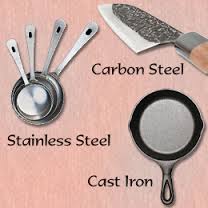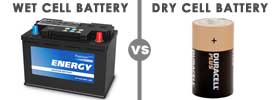Difference between Ferrous and Non-Ferrous Metal
Key Difference: Ferrous and non-ferrous metals are two different types of metals. This categorization is based on the iron content. In case the metal contains iron, it is known as a ferrous metal, otherwise a non-ferrous metal.
 Ferrous word has been derived from the Latin word ferrum which means 'contains iron'. Therefore, it refers to those metals which contain iron. Ferrous metals may also contain some other metals or elements. The main properties of ferrous metals are that they get attracted to magnet and also possess little resistance to corrosion. It includes mild steel, carbon steel, cast iron, wrought iron, etc. Carbon steel contains 0.6 percent to 1.4 percent of carbon, whereas 98.6 to 99.4 percent iron.
Ferrous word has been derived from the Latin word ferrum which means 'contains iron'. Therefore, it refers to those metals which contain iron. Ferrous metals may also contain some other metals or elements. The main properties of ferrous metals are that they get attracted to magnet and also possess little resistance to corrosion. It includes mild steel, carbon steel, cast iron, wrought iron, etc. Carbon steel contains 0.6 percent to 1.4 percent of carbon, whereas 98.6 to 99.4 percent iron.
These ferrous metals are used in various purposes like engineering etc.
 Non-Ferrous metals are just the opposite of ferrous metals, as they do not contain any amount of iron. Due to absence of iron, they do not possess magnetic properties. They tend to be more resistant to corrosion than in comparison to ferrous metals. Aluminium, zinc and tin are all examples of non-ferrous metals.
Non-Ferrous metals are just the opposite of ferrous metals, as they do not contain any amount of iron. Due to absence of iron, they do not possess magnetic properties. They tend to be more resistant to corrosion than in comparison to ferrous metals. Aluminium, zinc and tin are all examples of non-ferrous metals.
Therefore, ferrous and non-ferrous metals are not the same. The main difference is presence of iron in the metal. Non-ferrous metals are mostly preferred over ferrous metals as they do not rust like ferrous metals. Therefore, ferrous metals are used in a variety of applications.
An advantage of ferrous metals is that they do get attracted by a magnet, and therefore can be used in applications like audio speakers, computer printers and microphone parts, as magnetic attraction is required in these kinds of applications. Non-Ferrous metals tend to be more lightweight than in comparison to ferrous metals. However, they are not considered to be as strong as many of the ferrous metals. Ferrous metals are generally cheaper than non-ferrous metals.
Comparison between Ferrous and Non-Ferrous Metal:
|
Ferrous Metals |
Non-Ferrous Metals |
|
|
Definition |
These are metals which contain iron |
These are metals which do not have any iron in them |
|
Resistance to corrosion |
Little |
More |
|
Magnetic |
Yes |
No |
|
Some Examples with applications |
|
|
|
Strength |
Generally more |
Generally less |
Image Courtesy: buzzle.com, mervis.com









Comments
FamilyFriendlyFred
Fri, 05/12/2017 - 08:12
Add new comment